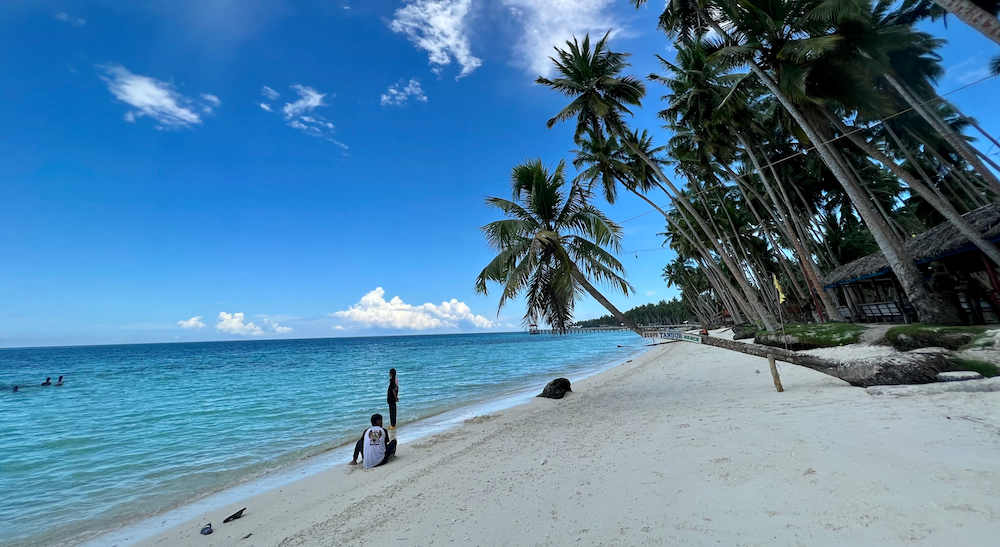JOLO, SULU: After decades of conflict and militant unrest, Sulu in the southwestern Philippines is pinning its hopes on visitors returning as the scenic island province finally enjoys a return to peace.
The province, with more than 150 islets, forms part of the Sulu archipelago, stretching from the tip of the Zamboanga Peninsula in the north to the island of Borneo in the south. Most of Sulu’s population of 1 million are Muslim.
In the late 1960s the region began to experience unrest, which triggered the rise of groups seeking autonomy for Filipino Muslims in the southern Philippines.
During decades of armed conflict with government forces, some separatist factions turned to criminal activity, including the Abu Sayyaf Group, which since the early 2000s has gained notoriety for extortion, assassinations and kidnappings for ransom, especially in areas neighboring Sulu, the group’s stronghold.
It took years for the military to crack down on the group and finally bring a relative sense of safety and hopes for development.
“Sulu is far better today,” Julkiram Arastam, Sulu provincial tourism officer, told Arab News in a recent interview in Jolo city, the capital of the province.
“Ten years ago, we could only dream that one day peace and order would no longer be a problem in Sulu, and it would be able to show the world how beautiful it is.”
Arastam knows it will take some time before investment arrives and the province can create proper tourism infrastructure.
“We are still in the process of image building, changing the bad perception of Sulu,” he said.
Infrequent commercial flights began to reach the island only this year, and only on small aircraft from Zamboanga City, about 150 kilometers away.
“Commercial flights to Sulu are pretty new; it has a very limited capacity. But we’re hoping that additional aircraft, bigger ones, will also fly to Jolo,” Arastam said.
“We are improving our airport and we’re also dreaming that there will be a direct flight from Manila.”
His wish is that flights will start bringing groups of tourists. So far there are only a few visitors from local areas. Last month about 20 arrived, according to Arastam. But that is still better compared with none, which was the case not long ago.
“We are developing our potential in tourism,” he said.
“Everyone enjoys the beautiful scenery, and locals like us, or even visiting tourists from Manila, can go to other municipalities without fear, without the fear of militancy.”
The largest ethnic group in Sulu are the Tausug, who in the 15th century dominated the area and established a sultanate. The sultanate of Sulu had its center in Jolo and exercised authority over the island chain.
While little remains of the sultanate, and most of its important architecture was destroyed by a typhoon in the early 20th century, local authorities have placed all their eggs in one basket — the region’s natural beauty — hedging their bets that this alone will attract visitors.
Long stretches of white powdery sand lapped by turquoise waters and fringed by coconut groves are among the sites that the municipal task force to end local armed conflict has identified as the province’s “seven wonders,” and “most promising areas for both sea-based and eco-tourism development.”
All the locations are in Patikul and Panamao municipalities.
The “wonders” include the infinity pool-shaped Timpuok Lake, Bitih beach and Bakungan island, which authorities say are the best areas for canoeing, kayaking and snorkeling.
Tambanan Lagoon and the Walo-Walo island rock formation, both described as superb diving areas, and the white sand beaches of Su-uh and Taung are also major attractions.
“About three years ago, this used to be the engagement area between our military forces and the Abu Sayyaf Group,” Brig. Gen. Benjamin Batara, of the Army 1103rd Infantry Brigade, told Arab News at Timpuok Lake.
“Now a lot of people are coming here. This place has been promoted on social media and a lot of people are coming,” he said. “We just cleaned this place a few months ago so that people can get a better view of the entire scenery.”
The “wonders” also have the potential to change the lives of Sulu communities.
Opportunities to earn a livelihood are crucial to stopping community members from joining militants in the impoverished, underdeveloped region.
“The governor has been consistently calling on the people, especially the locals, that we should value the peaceful Sulu that everyone is enjoying now. What we are saying, especially to our fellow Tausug, is let us be vigilant in safeguarding our province. Let us not allow the situation in the province to return to how it was before,” Arastam said.
“We have started to personally feel peace in Sulu.”
The military also sees an increasing sense of safety among the province’s population.
“There is movement of people now, unlike before,” Maj. Gen. Ignatius Patrimonio, commander of the 11th Infantry Division, a unit designated to fight militancy in Sulu, told Arab News.
“The people of Sulu themselves are now enjoying the tourist destinations here.”
But the threat posed by militants is not completely gone, although many have surrendered to security forces.
According to the 11th Infantry Division, in 2019 there were about 300 members of the ASG active in the region. The number has since significantly decreased, but the military estimates that about 100 militants are still at large.
Patrimonio said that militants “still pose a threat for as long they are here.”
Yet he believes that will not last long as more decide to lay down arms.
“We’re seeing the demise of the Abu Sayyaf Group,” he said. “Soon.”




